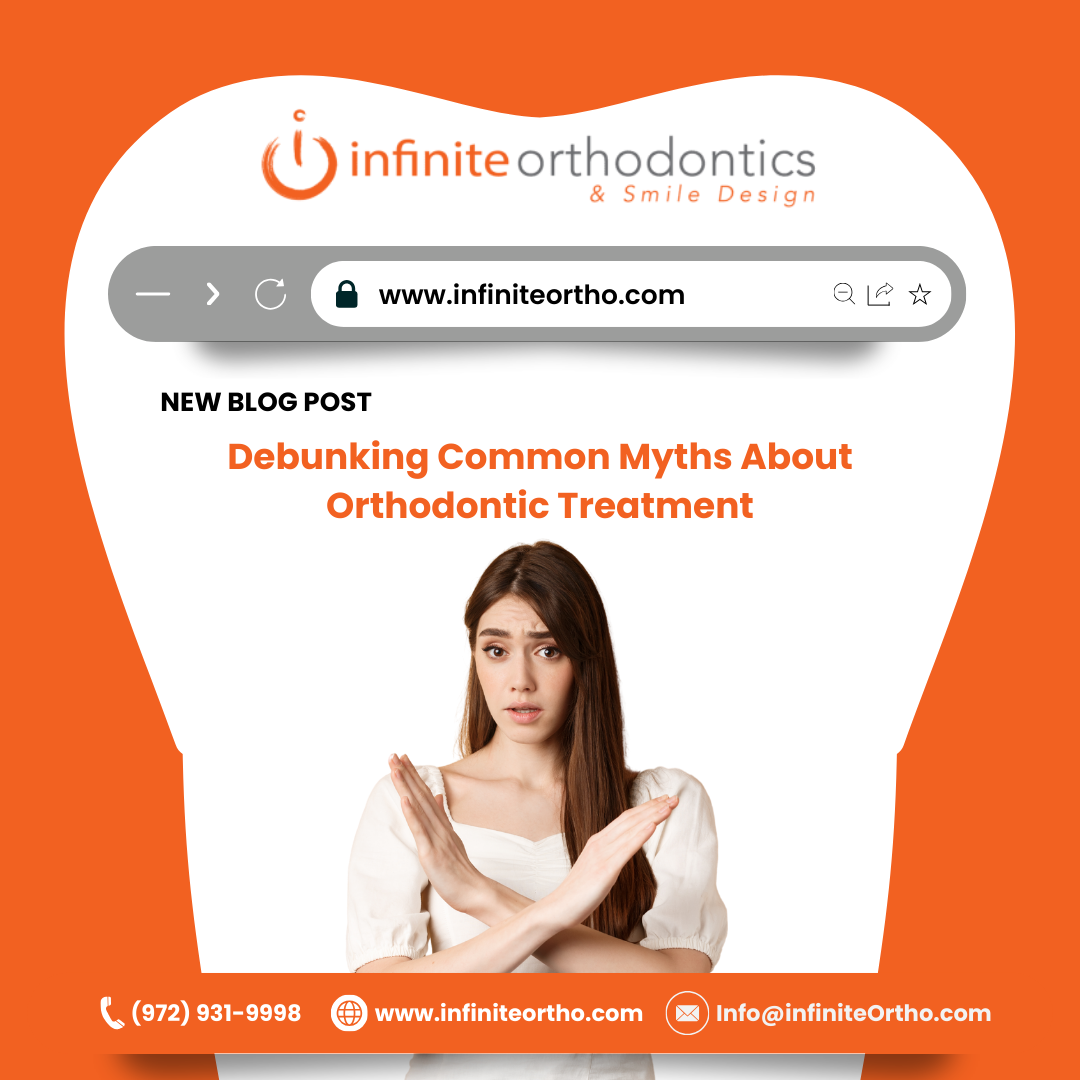Orthodontic treatment is a specialized branch of dentistry that focuses on correcting misaligned teeth and jaws for improved oral health and aesthetics. In Lubbock, Texas, orthodontic experts are debunking common myths associated with orthodontic treatment to provide patients with accurate information and peace of mind. One unique insight from these professionals is the misconception that orthodontic treatment is only for children and teenagers. In reality, individuals of all ages can benefit from orthodontic care, as advancements in technology have made treatment options more discreet and efficient.
Lubbock orthodontic experts are also shedding light on the myth that orthodontic treatment is purely cosmetic. While a straighter smile may enhance one’s appearance, orthodontic treatment can also address serious oral health issues such as bite problems, jaw pain, and difficulty chewing. By debunking these myths, orthodontic professionals in Lubbock are empowering patients to make informed decisions about their dental care. In the upcoming sections, we will delve into the key takeaways from these experts, providing valuable insights for those considering orthodontic treatment.

What you should know
1. Orthodontic treatment is not just for aesthetics; it can also improve oral health by addressing issues like misalignment, overcrowding, and bite problems.
2. Contrary to common belief, orthodontic treatment is not only for children and teenagers – adults can benefit from it as well with advancements in technology and treatment options.
3. Clear aligners, such as Invisalign, are a discreet and convenient option for those who want to straighten their teeth without the use of traditional braces.
4. Orthodontic treatment may take longer for adults compared to children and teenagers, as adult teeth are more set in place and require additional time to move.
5. It is important to consult with orthodontic experts to address any concerns or misconceptions about treatment, as individual cases may vary in terms of complexity and treatment options available.
Is orthodontic treatment really necessary?
Yes, orthodontic treatment is essential for correcting misaligned teeth and jaws, improving oral health, and enhancing overall appearance. Many people believe that orthodontic treatment is only for cosmetic purposes, but in reality, it can also prevent various dental issues such as tooth decay, gum disease, and jaw pain. By straightening teeth and aligning the bite properly, orthodontic treatment can improve chewing and speech functions, leading to better overall health and well-being.
Orthodontic treatment is not just about achieving a beautiful smile; it is also about ensuring proper dental health and function. Misaligned teeth can create spaces where food particles can get trapped, leading to plaque buildup and eventually tooth decay. Additionally, crooked teeth can put excessive pressure on certain areas of the mouth, causing uneven wear and tear on the teeth and potential jaw pain.
Furthermore, orthodontic treatment can help prevent or alleviate issues such as temporomandibular joint (TMJ) disorders, which can cause pain and discomfort in the jaw joint and surrounding muscles. By addressing these issues early on through orthodontic treatment, individuals can avoid more extensive dental procedures in the future and maintain a healthy smile for years to come.
Overall, orthodontic treatment is not just about aesthetics; it is a crucial aspect of maintaining good oral health and overall well-being. By seeking treatment from experienced orthodontic experts in Lubbock, individuals can achieve a healthy, functional smile that will benefit them for a lifetime.
What are some common myths about orthodontic treatment?
There are several misconceptions surrounding orthodontic treatment that can deter individuals from seeking the care they need. Let’s debunk some of these common myths:
1. Orthodontic treatment is only for children: While it is true that orthodontic treatment is often recommended for children and teenagers, adults can also benefit from orthodontic care. With advancements in orthodontic technology, adults can now choose from various treatment options that are discreet and effective, such as clear aligners or ceramic braces.
2. Orthodontic treatment is painful: While some discomfort may be experienced during the initial adjustment period, orthodontic treatment should not be painful. Orthodontic experts in Lubbock are trained to ensure that patients are comfortable throughout their treatment journey, and any discomfort can be managed with over-the-counter pain relievers if needed.
3. Orthodontic treatment is too expensive: While orthodontic treatment can be an investment, many orthodontic offices offer flexible payment plans and financing options to make treatment more affordable. Additionally, the long-term benefits of orthodontic treatment, such as improved oral health and self-confidence, far outweigh the initial cost.
By debunking these common myths and seeking guidance from orthodontic experts in Lubbock, individuals can make informed decisions about their orthodontic treatment and achieve a healthy, beautiful smile.
1. Can orthodontic treatment be painful?
One common myth about orthodontic treatment is that it is extremely painful. However, advancements in technology and techniques have made orthodontic treatment much more comfortable than in the past. While some discomfort may be experienced during the initial adjustment period, most patients find that any pain is manageable with over-the-counter pain medication and typically subsides within a few days.
2. Is orthodontic treatment only for children and teenagers?
Another common misconception is that orthodontic treatment is only for children and teenagers. In reality, orthodontic treatment can be beneficial for individuals of all ages. Many adults choose to undergo orthodontic treatment to improve the alignment of their teeth and enhance their overall oral health. It is never too late to achieve a straighter, healthier smile through orthodontic treatment.
3. Will orthodontic treatment interfere with my daily activities?
Orthodontic treatment is designed to fit seamlessly into your daily routine. While there may be some adjustments needed, such as avoiding certain foods or practicing good oral hygiene habits, most patients find that orthodontic treatment does not significantly interfere with their daily activities. Your orthodontist will work with you to create a treatment plan that is convenient and effective for your lifestyle.
4. How long does orthodontic treatment typically take?
The duration of orthodontic treatment can vary depending on the individual case and the specific treatment plan. On average, most patients undergo orthodontic treatment for 18-24 months. However, some cases may require shorter or longer treatment times. Your orthodontist will provide you with a timeline for your treatment and keep you informed of your progress throughout the process.
5. Are there alternatives to traditional braces for orthodontic treatment?
Yes, there are several alternatives to traditional braces for orthodontic treatment. Invisalign clear aligners, lingual braces, and ceramic braces are all popular options for individuals seeking a more discreet or customizable treatment option. Your orthodontist can help you determine which treatment option is best suited to your needs and goals.
6. Will orthodontic treatment affect my speech?
While some patients may experience temporary changes in their speech patterns during the initial adjustment period, most individuals find that any speech issues resolve quickly as they become accustomed to their orthodontic appliances. Your orthodontist can provide tips and exercises to help you adjust to your treatment and maintain clear speech throughout the process.
7. Can orthodontic treatment improve my overall oral health?
Yes, orthodontic treatment can have a positive impact on your overall oral health. By correcting misaligned teeth and bite issues, orthodontic treatment can help reduce the risk of tooth decay, gum disease, and other oral health problems. Additionally, a straighter smile is easier to clean and maintain, leading to improved oral hygiene and long-term oral health benefits.
8. Will I need to wear a retainer after orthodontic treatment?
Yes, wearing a retainer after orthodontic treatment is essential to maintain the results of your treatment. Retainers help prevent your teeth from shifting back to their original positions and ensure that your smile remains straight and healthy. Your orthodontist will provide you with specific instructions on how and when to wear your retainer to maximize the effectiveness of your treatment.
9. Can orthodontic treatment help with jaw pain or TMJ issues?
Orthodontic treatment can be beneficial for individuals experiencing jaw pain or temporomandibular joint (TMJ) issues. By correcting misaligned teeth and bite problems, orthodontic treatment can help alleviate pressure on the jaw joint and improve overall jaw function. Your orthodontist can evaluate your specific case and recommend a treatment plan to address any jaw pain or TMJ issues you may be experiencing.
10. How can I find a qualified orthodontist for my treatment?
When seeking orthodontic treatment, it is important to choose a qualified and experienced orthodontist who can provide you with the best possible care. You can start by asking for recommendations from your dentist, friends, or family members. Additionally, you can research orthodontists in your area, read reviews, and schedule consultations to find the right fit for your needs. Be sure to ask about the orthodontist’s credentials, experience, and treatment options to ensure that you receive high-quality care and achieve the best results for your smile.
